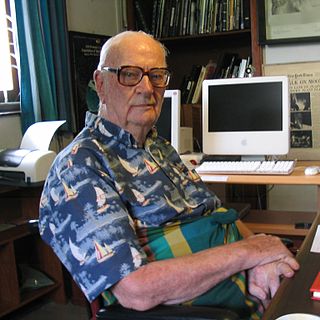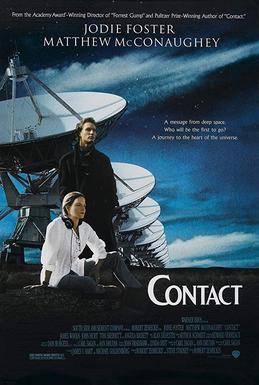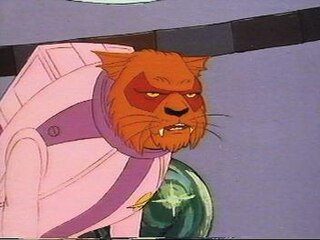Related Research Articles

Hard science fiction is a category of science fiction characterized by concern for scientific accuracy and logic. The term was first used in print in 1957 by P. Schuyler Miller in a review of John W. Campbell's Islands of Space in the November issue of Astounding Science Fiction. The complementary term soft science fiction, formed by analogy to the popular distinction between the "hard" (natural) and "soft" (social) sciences, first appeared in the late 1970s. Though there are examples generally considered as "hard" science fiction such as Isaac Asimov's Foundation series, built on mathematical sociology, science fiction critic Gary Westfahl argues that while neither term is part of a rigorous taxonomy, they are approximate ways of characterizing stories that reviewers and commentators have found useful.

Laurence van Cott Niven is an American science fiction writer. His 1970 novel Ringworld won the Hugo, Locus, Ditmar, and Nebula awards. With Jerry Pournelle he wrote The Mote in God's Eye (1974) and Lucifer's Hammer (1977). The Science Fiction and Fantasy Writers of America gave him the 2015 Damon Knight Memorial Grand Master Award.
Known Space is the fictional setting of about a dozen science fiction novels and several collections of short stories by American writer Larry Niven. It has also become a shared universe in the spin-off Man-Kzin Wars anthologies. The Internet Speculative Fiction Database (ISFDB) catalogs all works set in the fictional universe that includes Known Space under the series name Tales of Known Space, which was the title of a 1975 collection of Niven's short stories. The first-published work in the series, which was Niven's first published piece, was "The Coldest Place", in the December 1964 issue of If magazine, edited by Frederik Pohl. This was the first-published work in the 1975 collection.

Alien invasion or space invasion is a common feature in science fiction stories and films, in which extraterrestrial lifeforms invade Earth to exterminate and supplant human life, enslave it, harvest people for food, steal the planet's resources, or destroy the planet altogether. It can be considered as a science-fiction subgenre of the invasion literature, expanded by H. G. Wells's seminal alien invasion novel The War of the Worlds, and is a type of 'first contact' science fiction.

The Kzinti are an alien cat-like species developed by Larry Niven in his Known Space series.

Contact is a 1997 American science fiction drama film directed by Robert Zemeckis, based on the 1985 novel of the same name by Carl Sagan. Sagan and his wife Ann Druyan wrote the story outline for the film. It stars Jodie Foster as Dr. Eleanor "Ellie" Arroway, a SETI scientist who finds evidence of extraterrestrial life and is chosen to make first contact. It also stars Matthew McConaughey, James Woods, Tom Skerritt, William Fichtner, John Hurt, Angela Bassett, Rob Lowe, Jake Busey, and David Morse. It features the Very Large Array in New Mexico, the Arecibo Observatory in Puerto Rico, the Mir space station, and the Space Coast surrounding Cape Canaveral.

Captain Star is a 1997 animated television series created by Steven Appleby and is based on Appleby's comic Rockets Passing Overhead. It stars Richard E. Grant as the voice of Captain Jim Star. The show was produced by Cosgrove Hall Films and HTV.

An Alderson disk is a hypothetical artificial astronomical megastructure, like Larry Niven's Ringworld and the Dyson sphere. The disk is a giant platter with a thickness of several thousand miles. The Sun rests in the hole at the center of the disk. The outer perimeter of an Alderson disk would be roughly equivalent to the orbit of Mars or Jupiter. According to the proposal, a sufficiently large disk would have a larger mass than its Sun.
"Neutron Star" is an English language science fiction short story by American writer Larry Niven. It was originally published in the October 1966 issue of Worlds of If. It was later reprinted in the collection of the same name and Crashlander. The story is set in Niven's fictional Known Space universe. It is notable for including a neutron star before their existence was widely known.

Protector is a 1973 science fiction novel by American writer Larry Niven, set in his Known Space universe. It was nominated for the Hugo in 1974, and placed fourth in the annual Locus poll for that year.

Inconstant Moon is a science fiction short story collection by American author Larry Niven that was published in 1973. "Inconstant Moon" is also a 1971 short story that is included in the collection. The title refers to "O, swear not by the moon, th' inconstant moon", a quote from the balcony scene in William Shakespeare's Romeo and Juliet. The collection was assembled from the US collections The Shape of Space and All the Myriad Ways.

"The Slaver Weapon" is the fourteenth episode of the first season of the American animated science fiction television series Star Trek: The Animated Series. It first aired on NBC on December 8, 1973, and was written by Larry Niven. It was based on his original short story "The Soft Weapon". This episode was expanded to become the first half of a full-length novel by science-fiction author Alan Dean Foster as Star Trek Log Ten.
"The Return of William Proxmire" is a short story by Larry Niven first published in 1989 in the anthology What Might Have Been? Volume 1: Alternate Empires, edited by Gregory Benford.

N-Space is a collection of short stories by American science fiction author Larry Niven released in 1990. Some of the stories are set in Niven's Known Space universe. Also included are various essays, articles and anecdotes by Niven and others, excerpts from some of his novels, and an introduction by Tom Clancy. Its sequel is Playgrounds of the Mind.

"The Borderland of Sol" is a science fiction novelette by American writer Larry Niven. It is the fifth in the Known Space series of stories about crashlander Beowulf Shaeffer.

Black holes, objects whose gravity is so strong that nothing—including light—can escape them, have been depicted in fiction since at least the pulp era of science fiction, before the term black hole was coined. A common portrayal at the time was of black holes as hazards to spacefarers, a motif that has also recurred in later works. The concept of black holes became popular in science and fiction alike in the 1960s. Authors quickly seized upon the relativistic effect of gravitational time dilation, whereby time passes more slowly closer to a black hole due to its immense gravitational field. Black holes also became a popular means of space travel in science fiction, especially when the notion of wormholes emerged as a relatively plausible way to achieve faster-than-light travel. In this concept, a black hole is connected to its theoretical opposite, a so-called white hole, and as such acts as a gateway to another point in space which might be very distant from the point of entry. More exotically, the point of emergence is occasionally portrayed as another point in time—thus enabling time travel—or even an entirely different universe.

The Sky People is an alternate history science fiction novel by American writer S. M. Stirling. It was first published by Tor Books in hardcover in November 2006, with a book club edition co-published with the Science Fiction Book Club following in December of the same year. Tor issued paperback, ebook, and trade paperback editions in October 2007, April 2010, and May 2010 respectively. Audiobook editions were published by Tantor Media in January 2007.
A list of works by, or about, the American science fiction author Larry Niven.
The Silurian hypothesis is a thought experiment, which assesses modern science's ability to detect evidence of a prior advanced civilization, perhaps several million years ago. The most probable clues for such a civilization could be carbon, radioactive elements or temperature variation. The name "Silurian" derives from the eponymous sapient species from the BBC science fiction series Doctor Who, who in the series established an advanced civilization prior to humanity, not from the eponymous geological period.
References
- ↑ Strahan, Jonathan (March 30, 2009). "The All-Time Top 40: The Hole Man, Larry Niven" . Retrieved 2020-07-10.